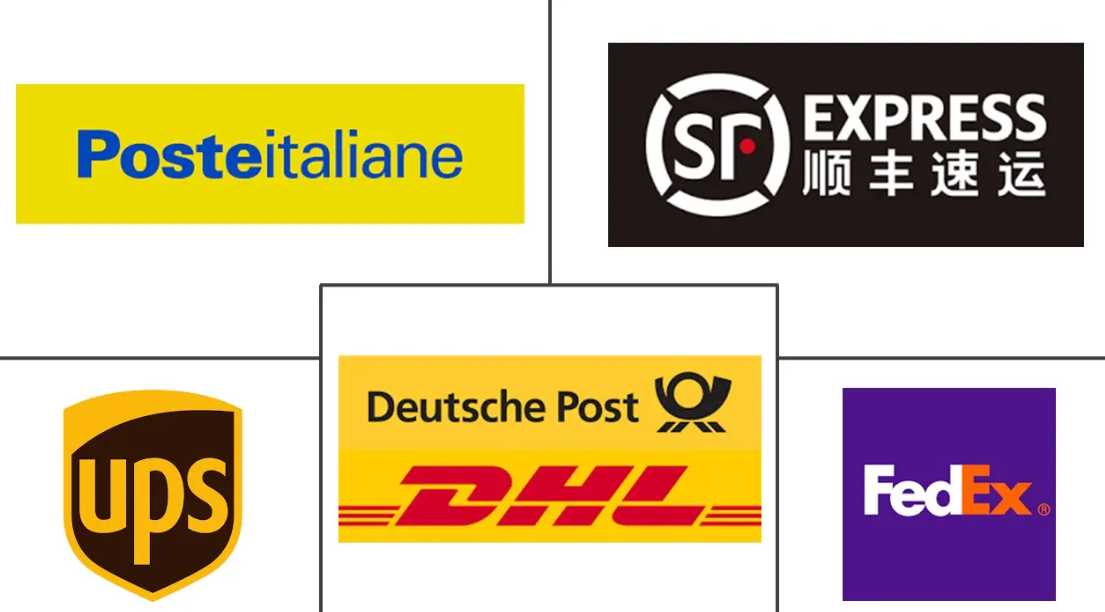Courier, Express, and Parcel (CEP) Market Analysis – Industry Growth, Size & Forecast Report (2025 – 2030)
Courier, Express and Parcel (CEP) Industry Analysis is Segmented By Business (B2B, B2C and C2C), Destination (Domestic and International), By End User (Services, Wholesale and Retail Trade, Manufacturing, Construction and Utilities, and Primary Industries), and By Geography (North America, Europe, Asia-Pacific, and Rest of the World). The report offers the market size and forecasts in value (USD) for all the above segments.
Courier, Express, and Parcel (CEP) Market Analysis – Industry Growth, Size & Forecast Report (2025 – 2030)
Courier, Express & Parcel (CEP) Market Size
| Study Period | 2020 – 2030 |
| Base Year For Estimation | 2024 |
| Forecast Data Period | 2025 – 2030 |
| CAGR | 10.64% |
| Fastest Growing Market | Asia Pacific |
| Largest Market | Asia-Pacific |
| Market Concentration | Low |
Major Players
*Disclaimer: Major Players sorted in no particular order |
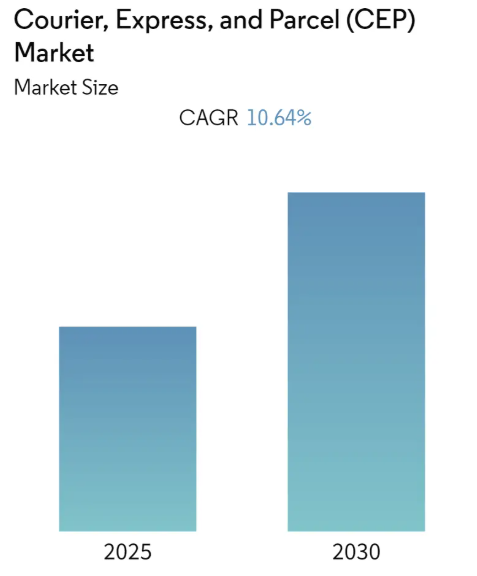
Compare market size and growth of Courier, Express, and Parcel (CEP) Market with other markets in Logistics Industry
Courier, Express & Parcel (CEP) Market Analysis
The Courier, Express, and Parcel Market is expected to register a CAGR of 10.64% during the forecast period.
Increasing demand through e-commerce is driving the market. Furthermore, there is an increased volume of shipments in terms of parcels in the B2C segment.
- Growth in the global express markets has been driven by strong domestic e-commerce sales. Domestic markets have been growing more quickly than international markets in most regions, but the gap is narrowing significantly in some regions. The gap between the domestic and international markets is smaller in North America and Europe. In Europe, this is primarily due to the interconnectedness of the market and the lower barriers to international trade. Domestic markets have proved capable of seizing on the opportunities that e-commerce brings.
- The CEP industry is posting impressive growth in developing countries, driven by the growth in international trade, rising internet and smartphone penetration boosting e-commerce sales, growing middle-class population, disposable incomes, and improved standards of living. Besides e-commerce, the emerging trends of omnichannel retailing in certain countries and growth in trade driven by economic growth are also some of the drivers of the CEP industry. As reported in April 2022, several foreign express giants said that their operations are running as normal, refuting online rumours that delivery companies from Europe and the US are suspending postal and parcel express services in China amid the COVID-19 epidemic. FedEx’s international express and freight centre at Shanghai Pudong International Airport has kept operating during the recent outbreak, in a bid to ensure normal export business and promote the recovery and development of global trade.
- Online retail sales, excluding travel, surpassed USD 1 trillion in 2022 for the first time in history. While online non-travel sales totaled USD 1.09 trillion, e-commerce sales in Q4 reached its highest quarter ever at USD 332.2 billion. E-commerce spending reached record highs during the 2022 holiday season. Consumers spent USD 211.7 billion online from Nov. 1 to Dec. 31, up 3.5% year over year. Among the top product categories during the holidays were toy sales, video games, apparel and accessories.
- Companies like Lufthansa Cargo have invested in digital capabilities with their e-booking but also want to make their bookings available to others so that API can offer the inventory in their systems. Larger customers would want to incorporate the data into their systems, but smaller customers needed a different approach. SME forwarders might not be as IT-savvy or want to invest, so we also need to be on platforms such as cargo.one or WebCargo, where they can compare rates, routings, stopovers and capacity and make their choice directly. Qatar Airways Cargo has a similar policy. In January 2021, it finally joined Freightos’s WebCargo booking platform. Qatar has also signed up for the Validaide Capabilities Platform, which now hosts some 11 airlines. It provides customers with access to information on the special handling capabilities of suppliers. Airlines can digitally manage and share station capabilities for pharma and healthcare products, and customers can see and review them.
Courier, Express & Parcel (CEP) Market Trends
E-Commerce And Omnichannel Retail Driving the Market
The global e-commerce market reached a value of USD 13 Trillion in 2021. Rapid urbanization across the globe is one of the key factors driving the growth of the market. Furthermore, increasing internet penetration and usage of devices, such as smartphones, laptops and tablets to access e-commerce portals, is also providing a boost to the market growth. E-commerce enables organizations to conduct business without maintaining a physical presence, thereby minimizing infrastructure, communication and overhead costs. Latin America saw USD 85 billion in e-commerce sales in 2021, up 25% from USD 68 billion in 2020. The Indian e-commerce market is expected to grow to USD 111.4 billion by 2025, up from USD 46.2 billion in 2020. Russia, the UK, and the Philippines saw more than 20% e-commerce sales growth in 2021.
North America, which includes the United States and Canada as the leading regions in business-to-consumer (B2C) e-commerce sales, accounts for around one-third of digital purchases worldwide. The increase in e-commerce trade over online portals has driven the growth of the global CEP market. The various e-commerce activities, such as online shopping through e-retail portals, are expected to fuel the market growth during the forecast period. Despite a difficult year for retail during the COVID pandemic, every national market saw double-digit e-commerce growth.
One of the greatest cross-border e-commerce markets, India and Mexico were in the top five countries in the world. With 50 million e-buyers, India is in third place (the high-growth region of Southeast Asia has been triggered by increased logistics and broadband infrastructure), and Mexico is in fifth place with 40 million e-buyers. These countries’ growing internet users make them great markets for multinational firms to sell into. In Hong Kong, Singapore, and Vietnam, cross-border purchases account for 31%, 43% and 55% of online purchases respectively. In Australia and New Zealand, 35% of online purchases are imported from outside the region, with 25% of e-purchases from North America and Europe.
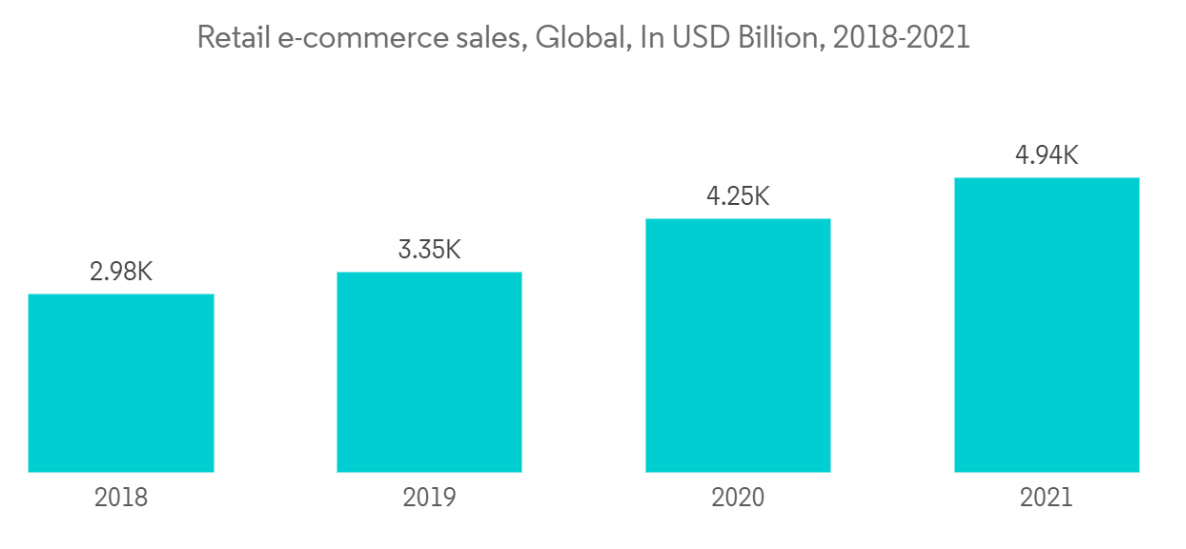
Cross-Border E-commerce Stimulating The Growth Of The International CEP Market
The growing e-commerce sector, along with the growing cross-border trade, is one of the key factors driving the growth of the CEP market. The development of cross-border trade channels, especially in emerging nations, has enhanced the adoption of international trade and B2C shipments. Furthermore, the increasing consumer preference for shopping online through various e-commerce portals is also providing a boost to market growth. E-commerce stores partner with courier service providers to deliver their products across domestic and international locations.
Technological advancements, including the utilization of digital technologies with crowd-sourced delivery models, are also creating a positive outlook for the market. These technologies aid the service providers in increasing their overall operational efficiency and meeting the requirements of the customers effectively. Other factors, including rapid urbanization, rising consumer expenditure capacities, and significant growth in the manufacturing sector, are projected to drive the market further toward growth during the forecast period. Automated package and freight shipping solutions are available to improve efficiency for the entire shipping process of retail vendors.
Retailers will soon be able to leave the paperwork to shipping partners, such as transmitting customs documentation electronically and enjoy a smooth customs clearance process, minimizing the time and cost involved in the associated paperwork. Moreover, with more regional and trade deals being negotiated between governments and trading blocs, it has become more attractive for SMEs to expand into new markets. The rapid growth of cross-border e-commerce is attributed to the rise of a young, urban population that is heavily reliant on technology.
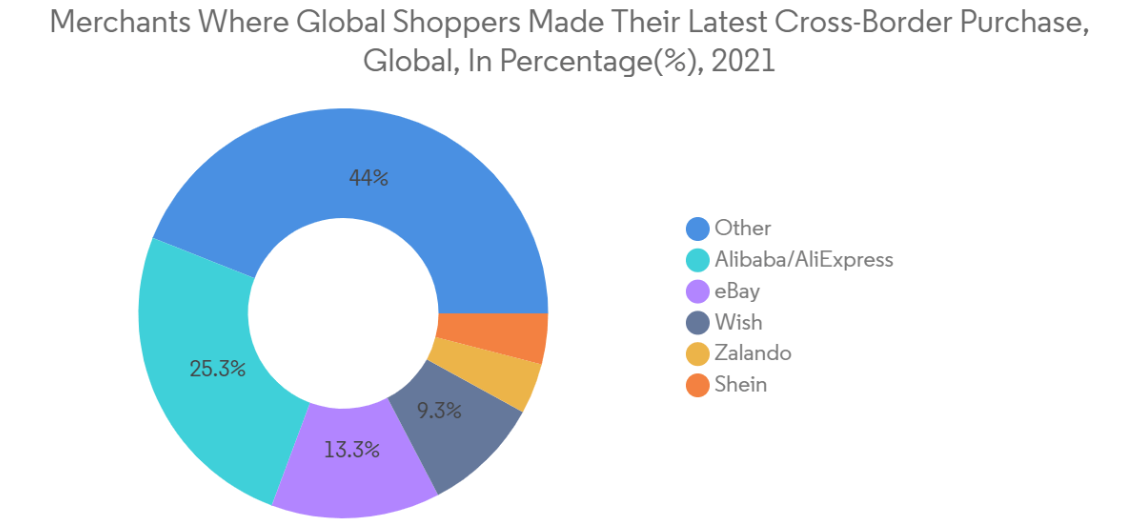
Courier, Express & Parcel (CEP) Industry Overview
The Courier, Express, and Parcel (CEP) Market is fragmented and highly competitive. DHL, FedEx, and UPS continue expanding their business across the globe to capture the market in the untapped areas. The global express and small parcels market continues to be driven forward by e-commerce. Companies are trying to grow organically or inorganically to improve their product offerings, services, and geographical reach. The international players are making strategic investments to establish a regional logistics network, such as opening new distribution centres, smart warehouses, etc. Local companies face high competition with multinational companies with comparatively well-developed infrastructure. In the regional context, domestic companies still have an edge.
Courier, Express & Parcel (CEP) Market Leaders
- Deutsche Post DHL Group
- United Parcel Service Inc.
- FedEx Corporation
- SF Express (Group) Co. Ltd
- Poste Italiane SpA
- *Disclaimer: Major Players sorted in no particular order
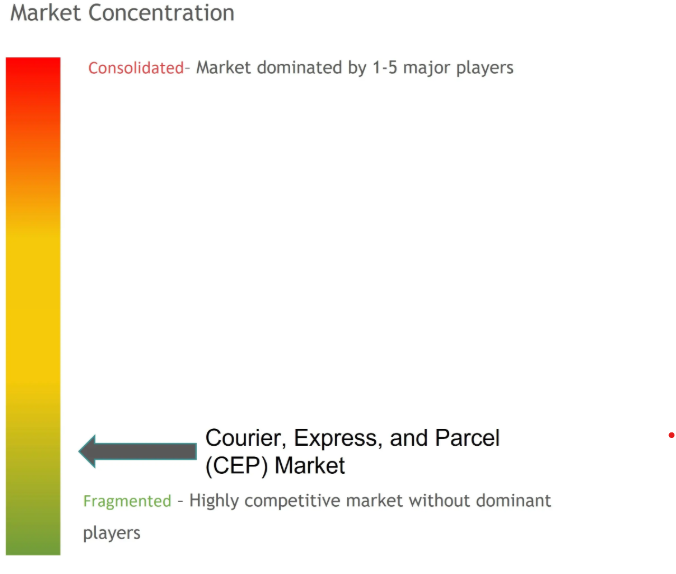
Courier, Express & Parcel (CEP) Market News
- November 2022- The real estate experts of DHL Supply Chain, the world’s leading contract logistics provider, have developed a carbon-neutral real estate portfolio of 400,000 sqm to support customers’ growth requirements across six European Tier 1 markets. Located in central logistics areas all sites will benefit from excellent multi-modal transport connectivity, designed to serve customers across different sectors.
- June 2022- FedEx Corp. announced it has received its first 150 electric delivery vehicles from BrightDrop, the technology startup from General Motors (GM) decarbonizing last-mile delivery. This marks a critical milestone for FedEx as the company plans to transform its entire parcel pickup and delivery (PUD) fleet to all-electric, zero tailpipe emissions by 2040 and comes just months after BrightDrop’scommercialization of the Zevo600 as the fastest vehicle to market in GM’s history.
Courier, Express & Parcel (CEP) Market Report – Table of Contents
1. INTRODUCTION
- 1.1 Study Background
- 1.2 Study Assumptions and Market Definition
2. RESEARCH METHODOLOGY
- 2.1 Research Framework
- 2.2 Secondary Research
- 2.3 Primary Research
- 2.4 Data Triangulation and Insight Generation
- 2.5 Project Process and Structure
- 2.6 Engagement Frameworks
3. EXECUTIVE SUMMARY
4. MARKET INSIGHTS
- 4.1 Current Market Scenario
- 4.2 Value Chain/Supply Chain Analysis
- 4.3 Government Regulations and Initiatives
- 4.4 Technological Trends and Automation in the CEP Industry
- 4.5 Insights on the E-commerce Industry (Domestic and Cross-border E-commerce)
- 4.6 Insights on Startups, Venture Capital Funding in the CEP Industry
- 4.7 Brief on Courier Rates
- 4.8 Elaboration on Storage Functions and Value-added Services in CEP Business
- 4.9 Insights on the Reverse Logistics and Same-day Delivery Market
- 4.10 Insights on Deliveries during Festive Season (Christmas, Singles’ day, Black Friday, etc.)
- 4.11 Impact of COVID-19 on the Market
5. MARKET DYNAMICS
- 5.1 Market Drivers
- 5.2 Market Restraints/Challenges
- 5.3 Market Opportunities
- 5.4 Industry Attractiveness – Porter’s Five Forces Analysis
- 5.4.1 Threat of New Entrants
- 5.4.2 Threat of Substitute Products
- 5.4.3 Bargaining Power of Buyers/Consumers
- 5.4.4 Bargaining Power of Suppliers
- 5.4.5 Intensity of Competitive Rivalry

